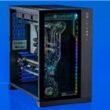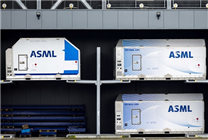QEMU 10.1: A Major Update Enhancing Virtualization Security and Performance
On August 31, QEMU, the open-source machine simulator and virtualization tool, announced the release of version 10.1. This significant update boasts over 2,700 submissions made by 226 developers, marking a substantial community effort to enhance its capabilities. With a primary focus on improving virtualization security, architecture support, and migration performance, QEMU 10.1 is a crucial upgrade for its users.
Key Features and Improvements
One of the standout features of QEMU 10.1 is its enhanced support for Intel TDX and AMD SEV-SNP, aimed at kernel-based virtual machines (KVM). These advancements enable users to access protected memory via VFIO and guest_memfd, with the additional capability of spinning up encrypted virtual machines directly from IGVM files.
Advances in Architecture Support
ARM Enhancements
The update brings a variety of new CPU features for ARM architecture, including:
- FEAT_SME2
- FEAT_SME2p1
- FEAT_SME_B16B16
- FEAT_SME_F16F16
- FEAT_SVE_B16B16
- FEAT_SVE2p1
Moreover, QEMU 10.1 has expanded support for several new development boards, while also implementing nested virtualization and CXL/ACPI hot-swap functionality on the "virt" board.
RISC-V and LoongArch Support
For RISC-V, this new version broadens its ISA support and adds compatibility with the Kunminghu CPU and various ACPI functions. In parallel, the update for LoongArch includes kernel IRQ chip support and enhancements for s390x simulation, where users can access control program identification data effortlessly via QOM.
User Interface Improvements
Beyond architectural improvements, QEMU 10.1 also refines the GTK interface, offering a more enjoyable zoom experience for users. Additionally, the SPICE GUI now supports remote OpenGL rendering, making graphical applications smoother and more efficient. A notable bug fix addresses a persistent blue screen issue affecting the Windows NT MIPS version running on Magnus machines.
System Requirements Update
With this release, QEMU has increased the minimum Rust version requirement to 1.77 and Meson to 1.8.1. Users should also note that support for Debian 11 has been discontinued, reflecting a shift toward more current technologies and platforms.
Conclusion
QEMU 10.1 signifies a considerable leap forward in virtualization technology, with a robust set of features aimed at enhancing security, performance, and usability. Whether you are a developer looking to leverage the latest in virtualization capabilities or a user interested in running diverse operating systems seamlessly, this update provides essential enhancements that elevate QEMU’s already impressive functionality.
Stay ahead in the virtualization landscape by upgrading to QEMU 10.1 and take advantage of its state-of-the-art features tailored for modern computing environments.









